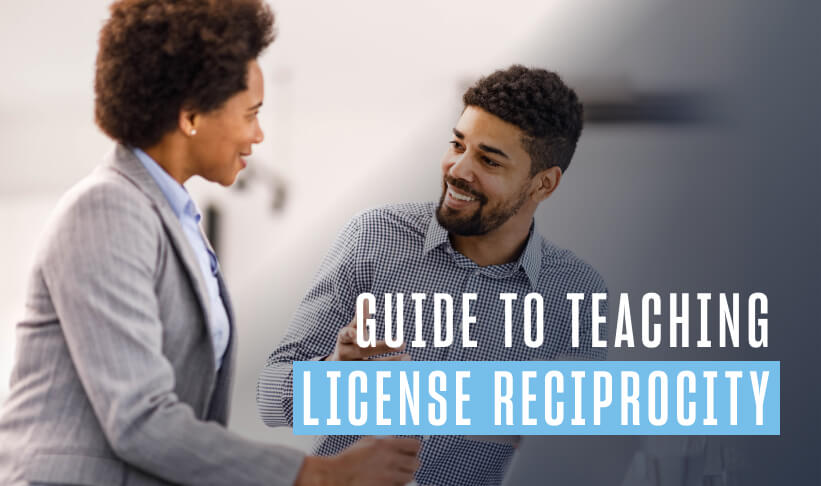With increasing awareness of the importance of inclusive classrooms, schools are making concerted efforts to implement strategies that support the greatest number of students with the resources on hand. One effective strategy is co-teaching, or pairing teachers together to complement each other’s strengths and better support students (and one another) in the classroom.
In this article, we explore six co-teaching models and offer up tips for successfully managing a co-teaching partnership.
What Is Co-Teaching?
Co-teaching is the practice of pairing teachers in the classroom to share the responsibilities of instructing, planning lessons, observing and helping students. The most common type of co-teaching arrangement is that between a general education teacher and a special education teacher who assists students with Individualized Education Plans (IEPs) or other special needs. Co-teachers may also serve as a bilingual education team, with one teacher assisting students who speak a language other than the primary language of instruction.
This model serves multiple purposes. First, it creates and supports a more inclusive classroom environment, where students of different abilities can participate in lessons and achieve success together. Second, a co-teaching arrangement helps teachers make better use of their resources: With two adults in the classroom, they can assist more students, keep materials more organized, share lesson planning duties and achieve better classroom management.
In most cases, both are licensed teachers, though each may have their own area of specialization (such as teaching an academic subject or using special education methods). Both teachers share equal responsibility for ensuring students are engaged and receive the best classroom experience possible.
Want the Brochure for USD’s Online Master of Education Degree?
Earn your M.Ed. in just 20 months with a program designed for working professionals.
6 Co-Teaching Models Explained
There are many types of co-teaching arrangements, and teaching teams may even use several different models in a single class period. The nature of co-teaching is fluid, so teachers will adapt their collaboration as it suits the occasion. Roles are generally interchangeable.
Here are a few common examples of co-teaching models, as explained by the Cult of Pedagogy:
- Team Teaching
In the most straightforwardly equitable model, co-teachers will “tag team” a lesson, with each taking a section of the lesson to deliver to the entire class at once. For example, in a classroom of students both with and without IEPs, both teachers will co-lead the lesson, each watching for and identifying ways to ensure the content is as clear as it can be for all students. This kind of partnership requires very strong trust and collaboration between teachers. - One Teach, One Observe
Here, one teacher will lead the lesson while the other observes the students to gauge comprehension, note any confusion or address any potential disruptions. Contrary to popular belief, teachers do not really have eyes in the backs of their heads, but this arrangement comes closest to giving teachers that super-ability. The teacher observing can also identify ways the instructor can improve or alter their delivery of course material, so both can improve in tandem. - One Teach, One Drift
This model adds an element to One Teach, One Observe, with the “drifting” teacher providing extra assistance or explanation to students who need it. The “drifter” can assist students with learning difficulties, English language learners or any student who is struggling to follow the lesson. - Station Teaching
In station co-teaching, the lesson is divided into sections and the students into two groups. Each teacher will designate a part of the classroom for a different part of the lesson, and rotate students between each “station.” This model splits the students into smaller groups so that each teacher can ensure comprehension and give students more individualized attention. It’s also an opportunity for teachers to lead parts of a lesson in which they may have more expertise than their partner. - Parallel Teaching
This method is similar to station teaching, except the lessons are quite literally parallel. The class is divided into two groups and the two teachers deliver the same content simultaneously, making appropriate instructional adjustments for each group. This model is very effective in a class of students with blended learning styles, ensuring that each group can successfully engage with the lesson. - Alternate Teaching
This model is mostly used when students with learning accommodations are in the minority in a general education classroom. One teacher may take a small group to another room to deliver the lesson the rest of the class is receiving, with appropriate adjustments. This is especially helpful for ELL students, students with Autism Spectrum Disorder or students who otherwise find it difficult to follow instruction in class. In certain circumstances, the smaller group may receive slightly differentiated instruction from the larger group, though the lesson topic remains the same. For example, one group of students may read a chapter of a textbook on the rainforest while the other group watches a short film on the same subject.
Pros & Cons of Co-Teaching Models
Every classroom is different, so one co-teaching model can be more effective than another for a certain group of students or pair of teachers. In general, each of the models outlined in this article carry pros and cons, according to Edutopia.
| Co-Teaching Model | Pros | Cons |
| Team Teaching | Equal instructional time for both teachers Allows each teacher to demonstrate content mastery Leverages both teachers’ strengths More dynamic lessons | Dependent on excellent teacher collaboration and trust Extensive planning |
| One Teach, One Observe | Easier data collection Helps improve instruction Gauge effectiveness of instruction | Neither the instructor nor students are necessarily receiving support during the lesson |
| One Teach, One Drift | Fewer interruptions to the lesson Better classroom management | Can be distracting to students |
| Station Teaching | Utilizes both teachers’ strengths Smaller student groups Incorporates movement | Takes more time to plan |
| Parallel Teaching | Smaller student groups More time for students to ask questions and absorb content Better classroom management | Requires both teachers to have equal content mastery Can pose logistical challenges with limited space and resources |
| Alternate Teaching | Helps students close learning gaps Gives students appropriate resources Enables differentiated instruction Can mitigate frequent absenteeism | Requires twice the planning |
Benefits of Co-Teaching for Special Education Classrooms
Co-teaching arrangements are helpful for any kind of classroom environment, but they are especially effective in special education classrooms, or even classes with blended learning styles.
- Co-teaching creates a less restrictive or divided classroom environment, since students with special accommodations do not necessarily need to be separated from the rest of their community.
- Two teachers working in tandem can ensure they deliver on the requirements of students’ IEPs.
- All students have the chance to build stronger social connections with their peers in a blended classroom environment.
- Students and teachers gain more opportunities for one-on-one interaction and individualized instruction.
- Teachers build stronger relationships with their students as well as each other.
- Students with special needs gain the required access to a general education curriculum.
- All students can benefit from the additional support, resources and inclusive excellence in the classroom.
- Students with disabilities can exercise independence.
- Co-teachers can create stronger, more creative lessons by sharing the planning process.
- Each teacher brings their unique strengths and expertise to the classroom.
- Teachers are able to support one another by complementing each other’s strengths and weaknesses, building camaraderie and dividing the workload.
Are You An Educator Considering the M.Ed Path?
Read the top 11 reasons to earn your master of education degree.
Tips for Implementing Successful Co-Teaching Strategies
Co-teaching can be an excellent way to maximize resources and leverage teachers’ unique strengths, and can be very successful when it works. That said, there are a handful of factors that can stand in the way of successful co-teaching.
Teachers placed in co-teaching arrangements by an administrator or department head may not have a choice in who their partner is. When two teachers with incompatible styles or personalities are paired together, both students and teachers can have a challenging time navigating lessons. Many teachers also have no experience or training in co-teaching when paired together and, depending on the school’s resources, may not have enough time to effectively delegate their work or identify each other’s strengths. This “trial by fire” approach tends to pose a challenge during class as well, with students potentially picking up on teachers’ incompatibility.
Whether two teachers have been paired strategically or out of necessity, here are six tips compiled from the National Education Association and Cult of Pedagogy for developing a successful co-teaching partnership:
- Respect is the golden rule.
One of the most common pain points of incompatible co-teachers is that they don’t feel respected by one another. Two teachers with vastly different styles can absolutely have a successful partnership, as long as each respects what the other brings to the table and does not dismiss their input or ideas on principle. Remember that teachers are role models for their students, so modeling respect for a teaching partner sets a very tangible example. - Define clear roles and responsibilities.
Classroom demands can change day-to-day, but co-teachers should establish who does what and when as early as possible. By clarifying responsibilities and expectations, teachers can avoid overstepping boundaries or disagreeing in front of students. Establish standards, then divide and conquer on things like scheduling, classroom management, grading, home communications, etc. - Plan together.
Speaking of which, all planning should be a team effort. While the time commitment will vary among teaching teams, co-teachers may need more planning time together than a single teacher typically needs on their own. Granted, each teacher may have their own section of the curriculum or class time to plan — one may prep a general education lesson while the other may differentiate the lesson for students with special needs — but all planning should be done in tandem and/or with real-time communication. - Stay flexible.
Even when two teachers work together for many years, the relationship evolves to adapt to new parameters. Co-teachers should strive to remain flexible, not only in their processes but also in the way they listen to each other and experiment with new ideas. Part of being flexible is staying open and receptive to feedback from a teaching partner, whether their suggestions pertain to classroom management, testing, scheduling or even communication with parents. Many times, flexibility means maintaining a willingness to let go of your idea in favor of your partner’s if it means improving the students’ experience. - Ask for administrative support.
Administrators make decisions based on the needs of students, available resources, budget constraints and input from the community and school board. It’s not always clear whether a decision will actually work until after it’s been implemented, including co-teaching assignments. If a teaching team finds that they need more time, more resources or any other kind of support to make their partnership more successful, administrators need to know so they can make the necessary adjustments. This also pertains to helping teachers understand why they were paired together, if neither party is quite sure or the partnership isn’t working. Always ask administrators for their input and support sooner rather than later. - Communication is key.
None of the previous tips are possible without excellent communication between co-teachers. Google is not only great for classroom tools but for organization too. Shared spreadsheets, documents and even email addresses can help teachers stay organized and on the same page, as well as allow both parties to work on the same resource from separate locations. Outside of lesson planning, teachers should set aside time to check in with each other — how each is feeling, what they think is going well, what could be better and any frustrations or challenges. Not only is great communication critical to ensuring students’ success but also for presenting a united front to parents and administrators.
Co-teaching can be a fundamental ingredient for building an inclusive classroom, one in which all students have what they need to feel supported and empowered to learn. The best way for current and aspiring K–12 teachers to build their knowledge and skills in fostering an inclusive learning environment is to learn from experienced educators.
Designed by teachers for teachers, the online Master of Education program at University of San Diego offers a specialization in Inclusive Learning and Universal Design intended to help all teachers meet the needs of student populations, no matter their abilities.
For more information about this innovative and timely graduate program, explore the research-based curriculum or connect with a USD enrollment advisor today.




